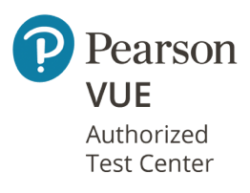Course Details
Topic 1 Getting Started on Laravel
- What is Laravel?
- why Laravel?
- Advantages of Laravel
- Composer and Artisan
- Features of Laravel
- Installation
- Directory Structure
Topic 2: Routing
- Basic Routing
- Redirect Routes
- View Routes
- Route Parameters
- Regular Expression Constraints
- Named Routes
- Middleware
- Namespaces
- Subdomain Routing
- Route Prefixes
- Route Name Prefixes
- Implicit Binding
- Explicit Binding
- Fallback Routes
- Rate Limiting
- Dynamic Rate Limiting
- Distinct Guest & Authenticated User Rate Limits
- Rate Limit Segments
- Accessing The Current Route
Topic 3 Middleware and Controllers
- Introduction
- Defining Middleware
- Controllers
- Resource Controllers
- Spoofing Form Methods
- Partial Resource Routes
- API Resource Routes
- Dependency Injection & Route Parameters
- Accessing The Request Via Route Closures
- Retrieving The Request Past
- Retrieving The Request URL
- Retrieving The Request Methods
- PSR_7 Requests
- Retrieving All Input Data
- Retrieving an Input Value
- Retrieving Input From The Query String
- Retrieving Input via Dynamic Properties
- Retrieving Boolean Input Value
- Retrieving A Portion of The Input Data
- Determining if an Input Value Present
- Flashing Input to The Session
- Retrieving Old Input
- Retrieving Cookies From Request
- Attaching Cookies to Response
- Generating Cookies Instances
- Generating Uploaded Files
- Validating Successful Uploads
- File path & Extensions
- Storing Uploaded Files
Topic 4 HTTP
- Creating Responses
- Response Objects
- Attaches Headers to Responses
- Caches Control Middleware
- Attaching Cookies to Responses
- Cookies And Encryption
- Redirecting to Named Routes
- Populating Parameters via Eloquent Models
- Redirecting to Controller Action
- Redirecting with Flashed Session Data
- View Responses
- Json Responses
- File Downloads
- Stream Downloads
- File Responses
Topic 5 Views
- Creating Views
- Determining if a View exists
- Creating the First Available View
- Passing Data to Views
- Attaching a Composer to Multiple Views
- Optimizing Views
Topic 6 URL Generation
- Generating Basic URLs
- Accessing the Current URL
- URLs for Moved Routes
- Signed URL
- Validating Signed Route Requests
Topic 7 HTTP Session
- Configuration
- Database
- Retrieving Data
- The Global Session Helper
- Retrieving All Session Data
- Determining if an Item exists in The Session
- Storing Data
- Pushing to Array Session Values
- Retrieving & Deleting an Item
- Flash Data
- Deleting Data
- Regenerating The Session ID
Topic 8 Validation
- Writing the Validation logic
Topic 9 Error Handling
- The Exception handler
Topic 10 Eloquent
- Defining Models
- Retrieving Models
- Adding Additional Constraints
- Refreshing Models
- Collections
- Subquery Selects
- Subquery Ordering
- Retrieving Single Models
- Not Found Exceptions
- Retrieving Aggregate
- Inserts
- Updates
- Mass Updates
- Mass Assignments
- Guarding Attributes
- Deleting Models
- One-To-One
- One-To-Many
- One-To-Many (Inverse)
- Has-One-Through
- One To One (Polymorphic)
- Many To Many (Polymorphic)
- Custom Polymorphic Types
- Querying Relations
- Chaining orWhere Clauses After Relationships
- Relationship Methods Vs. Dynamic Properties
- Querying Relationship Existence
- Querying Relationship Absence
- Querying Polymorphic Relationships
- Counting Related Models
- Eager Loading
- Eager Loading Multiple Relationships
- Nested Eager Loading
- Nested Eager Loading morphTo Relationships
- Eager Loading Specific Columns
- Eager Loading By Default
- Constraining Eager Loads
- Lazy Eager Loading
- Nested Lazy Eager Loading & morphTo
Course Info
Promotion Code
Your will get 10% discount voucher for 2nd course onwards if you write us a Google review.
Minimum Entry Requirement
Knowledge and Skills
- Able to operate using computer functions
- Minimum 3 GCE ‘O’ Levels Passes including English or WPL Level 5 (Average of Reading, Listening, Speaking & Writing Scores)
Attitude
- Positive Learning Attitude
- Enthusiastic Learner
Experience
- Minimum of 1 year of working experience.
Target Age Group: 18-65 years old
Minimum Software/Hardware Requirement
Software:
Hardware: Window or Mac Laptops
Job Roles
- Web designers who want to learn the basics of PHP Programming
- Web administrators who want to learn the basics of MySQL
- Website owners who own a CMS website and want to be able to modify the functionality.
Trainers
Muhammed Siraj : Muhammed Siraj is an IT executive, lecturer, trainer, security expert, developer, hardware technician, and entrepreneur with over 15 years of experience in the IT profession. He is an experienced IT instructor who has delivered several lecturers in the area of Cybersecurity, Computer Forensics, and Fraud detection to the military, police, CID, Financial Institutions, among others. In addition to training, he provides consultancy services to Educational and Governmental Institutions in the area of computer security and adoption of Open Source solutions. His experience and knowledge acquired from Ghana, Mali, Denmark, South Africa, and Malaysia, enables him to interact with people of different cultural backgrounds very well.
Skillset:
- Degrees in IT, Economics, Psychology. Currently pursuing his PhD in Computer Science (Security in Computing field)
- Certified CEH, CHFI, Hardware repairs and maintenance.
- Data mining, Office automation, filemaker, Fraud detection, Blockchain, Hardware repairs, Google Power Searcher, Drupal/Laravel/CakePHP developer.
- Proficient in Python, Ruby, PHP, Java, Solidity, VBA, Google Apps Script, Javascript, HTML, CSS, SQL.
Customer Reviews (2)
- Overall course content is very good and instructor is very knowledgeable. Review by Course Participant/Trainee
-
Include more production related topics such as deployment tips and using of queues1. Do you find the course meet your expectation? 2. Do you find the trainer knowledgeable in this subject? 3. How do you find the training environment
Overall course content is very good and instructor is very knowledgeable. (Posted on 12/6/2021) - will recommend Review by Course Participant/Trainee
-
. (Posted on 12/2/2021)1. Do you find the course meet your expectation? 2. Do you find the trainer knowledgeable in this subject? 3. How do you find the training environment
























